Low-sodium diet induces atherogenesis regardless of lowering blood pressure in hypertensive hyperlipidemic mice
- PMID: 28481921
- PMCID: PMC5421755
- DOI: 10.1371/journal.pone.0177086
Low-sodium diet induces atherogenesis regardless of lowering blood pressure in hypertensive hyperlipidemic mice
Abstract
This study investigated the influence of sodium restriction and antihypertensive drugs on atherogenesis utilizing hypertensive (H) low-density lipoprotein-receptor knockout mice treated or not with losartan (Los) or hydralazine (Hyd) and fed low-sodium (LS) or normal-sodium (NS) chow. Despite reducing the blood pressure (BP) of H-LS mice, the LS diet caused arterial lipid infiltration due to increased plasma total cholesterol (TC) and triglycerides (TG). Los and Hyd reduced the BP of H-LS mice, and Los effectively prevented arterial injury, likely by reducing plasma TG and nonesterified fatty acids. Aortic lipid infiltration was lower in Los-treated H-LS mice (H-LS+Los) than in normotensive (N)-LS and H-LS mice. Aortic angiotensin II type 1 (AT1) receptor content was greater in H-NS than H-LS mice and in H-LS+Hyd than H-LS+Los mice. Carboxymethyl-lysine (CML) and receptor for advanced glycation end products (RAGE) immunostaining was greater in H-LS than H-NS mice. CML and RAGE levels were lower in LS animals treated with antihypertensive drugs, and Hyd enhanced the AT1 receptor level. Hyd also increased the gene expression of F4/80 but not tumor necrosis factor-α, interleukin (IL)-1β, IL-6, IL-10, intercellular adhesion molecule-1 or cluster of differentiation 66. The novelty of the current study is that in a murine model of simultaneous hypertension and hyperlipidemia, the pleiotropic effect of chronic, severe sodium restriction elicited aortic damage even with reduced BP. These negative effects on the arterial wall were reduced by AT1 receptor antagonism, demonstrating the influence of angiotensin II in atherogenesis induced by a severely LS diet.
Conflict of interest statement
Figures

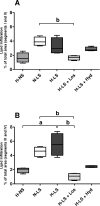
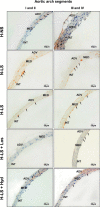

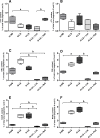
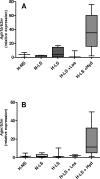
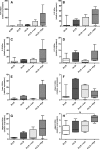
References
-
- Stolarz-Skrzypek K, Kuznetsova T, Thijs L, Tikhonoff V, Seidlerová J, Richart T, et al. Fatal and nonfatal outcomes, incidence of hypertension, and blood pressure changes in relation to urinary sodium excretion. JAMA. 2011; 305: 1777–1785. doi: 10.1001/jama.2011.574 - DOI - PubMed
-
- Alderman MH. Dietary sodium and cardiovascular health in hypertensive patients: the case against universal sodium restriction. J Am Soc Nephrol. 2004; 15 (Suppl 1): S47–S50. - PubMed
-
- Alderman MH. Reducing dietary sodium: the case for caution. JAMA. 2010; 303: 448–449. doi: 10.1001/jama.2010.69 - DOI - PubMed
-
- Garg R, Williams GH, Hurwitz S, Brown NJ, Hopkins PN, Adler GK. Low-salt diet increases insulin resistance in healthy subjects. Metabolism. 2011; 60: 965–968. doi: 10.1016/j.metabol.2010.09.005 - DOI - PMC - PubMed
-
- Krikken JA, Dallinga-Thie GM, Navis G, Dullaart RP. Short term dietary sodium restriction decreases HDL cholesterol, apolipoprotein A-I and high molecular weight adiponectin in healthy young men: relationships with renal hemodynamics and RAAS activation. Nutr Metab Cardiovasc Dis. 2012; 22: 35–41. doi: 10.1016/j.numecd.2010.03.010 - DOI - PubMed
MeSH terms
Substances
LinkOut - more resources
Full Text Sources
Other Literature Sources
Medical
Molecular Biology Databases
Research Materials
Miscellaneous

